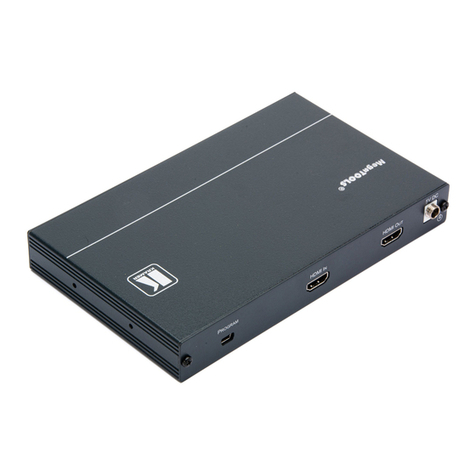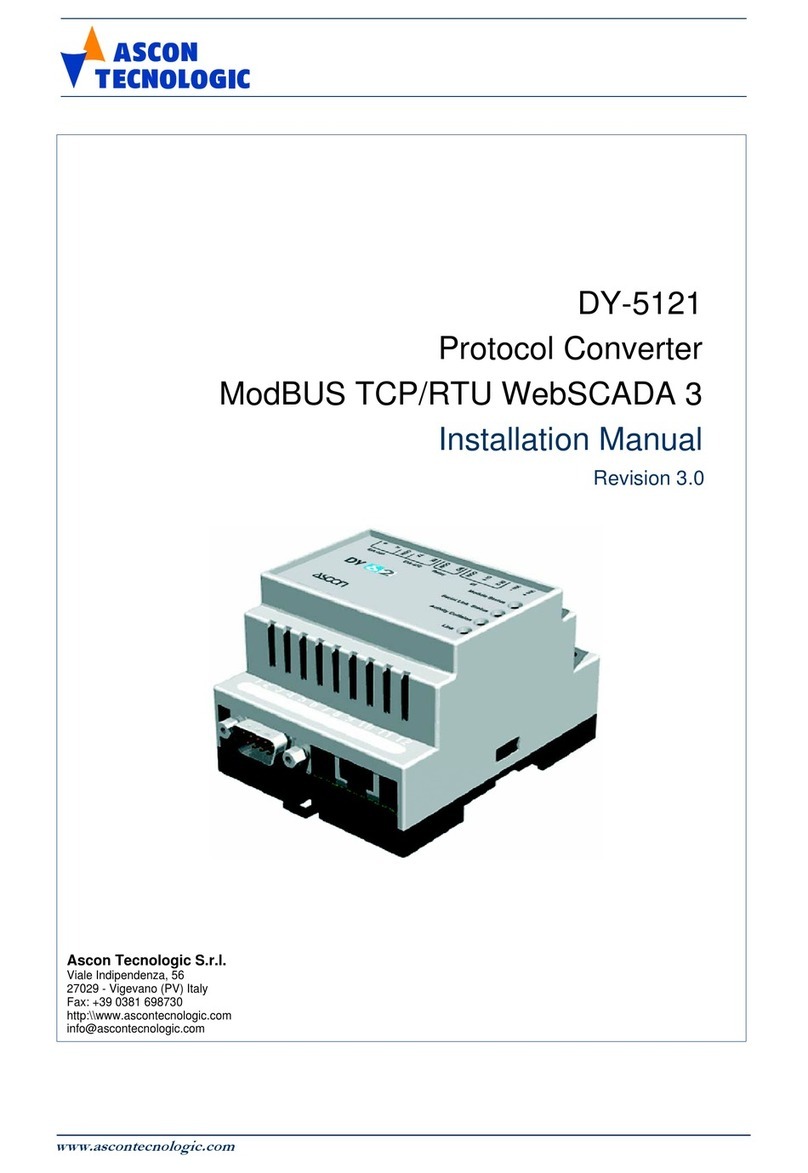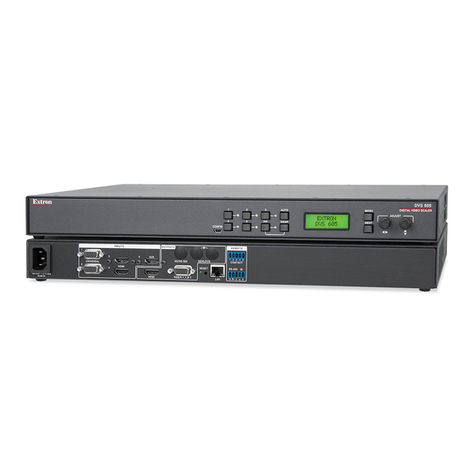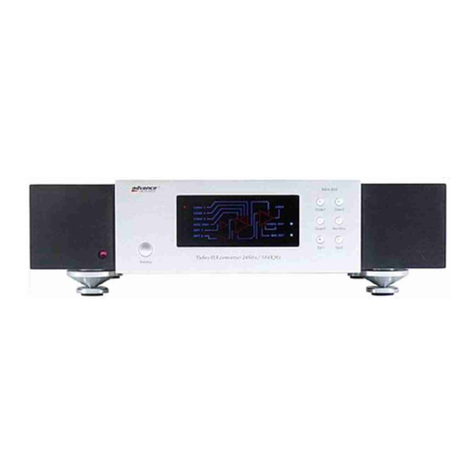Titan Pro TPLS7T User manual

FOR YOUR SAFETY
READ AND UNDERSTAND THE ENTIRE MANUAL BEFORE OPERATING
MACHINE
Both model number and serial number may be found on the main label.
You should record both of them in a safe place for future use.
Hydraulic Log Splitter
Operator's Manual
Save This Manual for Future Reference
Original Instruction
MODEL NUMBER : TPLS7T
SERIAL NUMBER :

2
INTRODUCTION
ENVIRONMENTAL
SYMBOLS
TABLE OF CONTENTS
Introduction
Symbols
Safety
Contents Supplied
Know Your Machine
Assembly
Splitter Operation
Freeing a Jammed Log
Transport
Replacing Hydraulic Oil
Delivering Log Splitter to Work Site
Sharpening Wedge
Trouble Shooting
Hydraulic System Diagram
Wiring Diagram
Parts Schematic
Special Warnings & Instructions
Specifications
Safety Warnings & Instructions
2
3
3
3
5
5
6
10
7
12
14
11
15
12
16
17
18
18
19
Your new log splitter will more than
satisfy your expectations. It has
been manufactured under stringent
quality standards to meet superior
performance criteria. You will find your
new unit easy and safe to operate, and
with proper care, it will give you many
years of dependable service.
Carefully read through this
entire operator's manual
before using your new log
splitter. Take special care
to heed the cautions and
warnings.
Recycle unwanted materials
instead of disposing of them
as waste. All tools, hoses and
packaging should be resorted,
taken to the local recycling
center and disposed of in an
environmentally safe way.
The rating plate on your machine
may show symbols. These represent
important information about the
product or instructions on its use.
Read these instructions
in full before using the
machine.
Do not remove or tamper
with any protection or
safety devices.
Wear safety footwear!
Wear protective gloves!
Wear eye protection!
Wear hearing protection!
Parts Schematic 19
UKCA Declaration of Conformity 24

3
SAFETY
Danger! Keep clear of
moving parts!
Do not remove jammed logs
with your hands.
Dispose of the used oil in an
environment-friendly way.
Before starting any repair
maintenance or cleaning,
always disconnect the power.
Do not use in the rain.
Keep bystanders away from
the working area.
Warning! Stay clear of
moving parts!
Safety Warnings & Instructions
UNDERSTAND YOUR LOG SPLITTER
DRUGS, ALCOHOL AND MEDICATION
AVOID DANGEROUS CONDITIONS
Read and understand the owner's
manual and labels affixed to the log
splitter. Learn its application and
limitations as well as the specific
potential hazards peculiar to it.
Do not operate the log splitter while
under the influence of drugs, alcohol,
or any medication that could affect
your ability to use it properly.
Put the log splitter on a 72-85 cm high,
stable, flat, and level work bench where
there is plenty of room for handling,
and help the operator stay altert. Bolt
the log splitter to the work surface if it
tends to slip, walk, or slide.
Keep your work area clean and well lit.
Cluttered areas invites injuries.
INSPECT YOUR LOG SPLITTER
Check your log splitter before turning
it on. Keep guards in place and
in working order. Form a habit of
checking to see that keys and adjusting
wrenches are removed from tool area
before turning it on. Replace damaged,
missing or failed parts before using it.
DRESS PROPERLY
Do not wear loose clothing, gloves,
neckties or jewelry (rings, wrist watches).
They can be caught in moving parts.
Protective electrically non conductive
gloves and non-skid footwear are
recommended when working. Wear
protective hair covering to contain long
hair, preventing it from get caught in
machinery.
PROTECT YOUR EYES AND FACE
Any log splitter may throw foreign
objects into the eyes. This can cause
permanent eye damage. Always wear
safety goggles. Everyday eyeglasses
have only impact resistant lenses. They
are not safety glasses.
Do not put the log splitter on the ground
for operations. This is awkward operating
position means that the operator has to
bring his face close to the machine, and
thus risks being struck by wood chips or
debris.
Do not use the log splitter in wet or
damp areas or expose it to rain.
Do not use it in areas where fumes
from paint, solvents or flammable
liquids pose a potential hazard.
EXTENSION CORDS
Improper use of extension cords may
cause inefficient operation of the log
splitter which can result in overheating.
Be sure the extension cord is no longer
than 10m and its diameter is no less than
2.5mm2to allow sufficient current flow to
the motor.
Avoid use of free and inadequately
insulated connections. Connections must
be made with protected material suitable
for outdoor use.

4
DON'T OVERREACH
PROTECT THE ENVIRONMENT
MAKE THE WORKSHOP CHILDPROOF
PROTECT YOUR HANDS
DON'T FORCE TOOL
NEVER LEAVE TOOL RUNNING
UNATTENDED
DISCONNECT POWER
MAINTAIN YOUR LOG SPLITTER
WITH CARE
AVOID INJURY FROM UNEXPECTED
ACCIDENT
INSPECT YOUR LOG
KEEP VISITORS AND CHILDREN AWAY
Floor must not be slippery.
Keep proper footing and balance at all
times.
Never stand on log splitter. Serious
injury could occur if the tool is tipped or
if the cutting tools are unintentionally
contacted. Do not store anything above
or near the log splitter where anyone
might stand on the tool to reach them.
Take used oil to an authorized collection
point or follow the stipulations in the
country where the log splitter is used.
Do not discharge into drains, soil or
water.
Lock the shop. Disconnect master
switches. Store the log splitter away
from children and others not qualified
to use it.
Keep you hands away from splits and
cracks which open in the log; They may
close suddenly and crush or amputate
your hands.
Do not remove jammed logs with your
hands.
It will do a better and safer job at
its design rate. Never try to split
logs larger than those indicated in
the specifications table. This could
be dangerous and may damage the
machine.
Don't use log splitter for a purpose for
which it was not intended.
Don't leave tool until it has come to a
complete stop.
Unplug when not in use, before making
adjustments, changing parts, cleaning,
or working on the log splitter. Consult
technical manual before servicing.
Keep the log splitter clean for best and
safest performance.
Always pay full attention to the
movement of the log pusher.
Make sure there are no nails or foreign
objects in logs to be split. The ends of the
logs must be cut square. Branches must
be cut off flush with the trunk.
The log splitter must be always operated
by one person only. Other people should
keep a safe distance from the work area,
especially when the log splitter is under
operations. Never use another person to
help you with freeing a jammed log.
AVOID ELECTRICAL SHOCK
Check that the electric circuit is
adequately protected and that it
corresponds with the power, voltage and
frequency of the motor. Check that there
is a ground connection, and a regulation
differential switch upstream.
Ground the log splitter. Prevent body
contact with grounded surfaces: pipes,
radiators, ranges, and refrigerator
enclosures.
Never open the pushbutton box on the
motor. Should this be necessary, contact
a qualified electrician.
Mark sure your fingers do not touch the
plug's metal prongs when plugging or
unplugging the log splitter.
Do not attempt to load the log on until
the log pusher has stopped.
Keep hands out of the way of all
moving parts.

5
●The splitting operation of the
machine is designed to be activated
by one person. While there is the
possibility that additional operators
could be working with the machine
(e.g. for loading and unloading),
only one operator should activate
splitting operations;
●The machine shall not be used by
children;
●Description of functional tests of the
machine;
Special Warnings & Instructions
●The installation and maintenance
requirements including a list of
those devices e.g. two-hand control
device which should be verified,
how frequently the verification shall
be carried out and by what method;
●Do not remove jammed logs with your
hands. Never use another person to
help you with freeing a jammed log.
Lower the wedge until the log is split
open.
●Only qualified person can assemble
the machine.
* S6 40%, continuous operation periodic duty: time
of one load cycle is 10 minutes, operation time at
constant load is 4 minutes, operation time at no-load
is 6 minutes.
* S3 25%, Intermittent periodic duty: time of one load
cycle is 10 minutes, operation time at constant load is
2.5 minutes, de-energized and at rest is 7.5 minutes.
* The diameter of the log is indicative – a small log can
be difcult to split when it has knobs or a particularly
tough ber. On the other hand, it may not be difcult
to split logs with regular bers.
Specifications
ELECTRICAL REQUIREMENTS
For model #65553, #65558-7, connect the
main leads to a standard 230V±10% (50Hz±1%)
electrical supply which has protection devices
of under-voltage, over-voltage, over-current as
well as a residual current device (RCD) which
maximum residual current rated at 0.03A.
For model #65558, #65558-6, connect the main
leads to a standard 220-240V±10% (50Hz±1%)
electrical supply which has protection devices
of under-voltage, over-voltage, over-current as
well as a residual current device (RCD) which
maximum residual current rated at 0.03A.
For all models, if machine installs BSI approved
plug or SEV approved plug, the degree of
protection of the plug and socket combination
should be IP44 at least.
Model Number 65553 65558 65558-6 65558-7
Motor 230V~50Hz,
1500W, 7.5A
220-240V ~50Hz,
2200W, S3 25%, 9.6A
230V ~50Hz, 2300W,
S6 40%, 10.3A
Log Size
Capacity
Dia. 50~250 mm
Length 130~370 mm 200~520 mm
Maximum Force 4 Ton 5 Ton 6 Ton 7 Ton
Hydraulic Pressure 16.5 Mpa 20.6 Mpa 20.8 Mpa 24.2 Mpa
Hydraulic Oil Capacity 2.4 L 3.5 L
Noise Pressure Level (LpA)
78.8 dbA under no load; 89.8 dbA under full load
Vibration < 2.5 m/s²
Overall
Sizes
Length 99.5 cm 116 cm
Width 42.5 cm
Height 61.0 cm
Weight Steel Cage 49 kg 55 kg 59 kg 60 kg
Wire Cage 45 kg 50 kg 54 kg 55 kg

6
CONTENTS SUPPLIED
1. Log Splitter Frame
2. Transport Handle
3. Support Strut 1 (2 pair)
4. Support Strut 2
5. Guard Bottom Plate
6. Log Tray 1
7. Log Tray 2
Steel Guard / Wire Guard
8. Plate connector (Steel Guard only)
9. Top Guard Plate 1
10. Top Guard Plate 2
11. Rear Guard Plate 1
12. Rear Guard Plate 2
13. Front Guard Plate
14. Left Guard Plate
(× 2)
(× 2)
1
16
5
3
6
4
8
7
10
14 12 13
STEEL GUARD
WIRE GUARD
14
10
12
15
2
11
9
11
9
13

7
15. Operator's Manual
16. Hardware Bag, including
ASSEMBLY
M6 ×16 (×2)
M6 ×16 ×2 A
Mount the lifting handle to the U
bracket with two M6×16 bolts.
Lifting Handle
M6 ×12 (×2)
M6 ×12 (×1)
1
2
M6 ×12 ×1 B
M6 ×12 ×2
Log Tray
1. Mount the guard bottom plate to rear
guiding plate and secure with two
M6×12 socket head cap screws and
locknuts.
Loosen the socket head cap screw
and big washer on the wheel bracket,
insert the open end of support strut
2 between the big washer and wheel
bracket and tighten screw.
Connect the upper end of support
strut 2 to the guard bottom plate
with cross recessed pan head screw
M6×12 and locknut M6 and then
tighten it.
M6 ×16 ×2 A
M6 ×12 ×1 B
M6 ×12 ×2
M6 ×12 ×1
M6 ×12 ×1 C
M6 ×12 ×1
M6 ×12 ×1
M6 ×12 ×1 D
M6 ×12 ×1
M6 ×12 ×2 E
STEEL GUARD
M6 ×12 ×8 F
M5 ×12 ×20 G
WIRE GUARD
M6 ×20 ×9 f
M6 ×20 ×1
M6 ×20 ×10 g
2. Align the two mounting holes of the
log tray 1 to the holes on rear side of
the splitter. Insert one socket head
cap screw M6×12 and spring washer
6 into the mounting hole on left side
and the other socket head cap screw
M6×12 and locknut M6 on right side
and securely tighten both.

8
M6 ×12 (×1)
M6 ×12 (×1)M6 ×12 (×1)
+
1
2
M6 ×12 ×1
M6 ×12 ×1 C
M6 ×12 ×1
M6 ×12 (×1)
M6 ×12 (×1)M6 ×12 (×1)
+
1
2
M6 ×12 ×1
M6 ×12 ×1 D
M6 ×12 ×1
M6 ×12 (×2)
M6 ×12 ×2 E
4. Connect log tray 1 and log tray 2 with
two M6×12 screws and locknuts.
Loosen the cup head bolt and nut
on left side of the front leg, insert
the open end of support strut 1 onto
the bolt and then tighten the nut.
Connect the upper end of support
strut 1 to the log tray 1 with cross
recessed pan head screw M6×12 and
locknut M6 and then tighten it.
3. Align the two mounting holes of the
log tray 2 to the holes on front side
of the splitter. Insert one socket head
cap screw M6×12 and spring washer
6 into the mounting hole on right side
and the other socket head cap screw
M6×12 and locknut M6 on left side
and securely tighten both.
Loosen the cup head bolt and nut
on right side of the front leg, insert
the open end of support strut 1 onto
the bolt and then tighten the nut.
Connect the upper end of support
strut 1 to the log tray 2 with cross
recessed pan head screw M6×12 and
locknut M6 and then tighten it.

9
M6 ×12 (×2)
M6 ×12 (×3)
M6 ×12 (×2)
M6 ×12 (×1)
M5 ×12 (×4)
M5 ×12 (×4)
M5 ×12 (×3)
(For model 65558,
65558-6, 65558-7)
M5 ×12 (×2)
(For model 65553
only)
M5 ×12 (×4)
M5 ×12 (×3)
M5 ×12 (×2)
1
3
2
M6 ×12 ×8 F
1. Attach the front guard plate, left
guard plate and two rear guard plates
to the log tray and bottom plate with
M6×12 bolts and nuts.
2. Mount the two top guard plates to
the vertical plates with M5×12 bolts
and nuts.
3. Connect two top guard plates / rear
guard plates with the plate connectors
and M5×12 bolts and nuts.
1. Connect two rear guard plates
together with two M6×20 bolts,
U-spacers and nuts.
2. Attach the front guard plate, left
guard plate and rear guard plates to
the log tray and bottom plate. Secure
the front and rear plates with M6×20
bolts, U-spacers and nuts and secure
the left plate with M6×20 bolt and
nut.
Steel Guard Wire Guard
M6 ×12 (×2)
M6 ×12 (×3)
M6 ×12 (×2)
M6 ×12 (×1)
M5 ×12 (×4)
M5 ×12 (×4)
M5 ×12 (×3)
(For model 65558,
65558-6, 65558-7)
M5 ×12 (×2)
(For model 65553
only)
M5 ×12 (×4)
M5 ×12 (×3)
M5 ×12 (×2)
1
3
2
M5 ×12 ×20
(For model 65558, 65558-6, 65558-7) G
M5 ×12 ×19
(For model 65553)
1
2
M6 ×20 (×3)
M6 ×20 (×2) M6 ×20 (×1 )
M6 ×20 (×2)
M6 ×20 (×2)
M6 ×20 ×9 f
M6 ×20 ×1
4M6 ×20 (×2)
3
M6 ×20 (×2)
M6 ×20 (×2)
M6 ×20 (×2)
M6 ×20 (×2)
M6 ×20 ×10 g
3. Mount the two top guard plates to
the vertical plates with M6×20 bolts,
U-spacers and nuts.
4. Connect two top guard plates with
two M6×20 bolts, U-spacers and nuts.

10
KNOW YOUR MACHINE
Log Retaining Plates
Lift Handle
Pushbutton Box
Log Pusher
Max Pressure Limiting Screw
Control Lever Guard
Bleed Screw
Support Leg
Wedge
Guard
Switch
Hydraulic Control Lever
Oil Drain Bolt w/ Dipstick
Motor
Log Tray
Work Table
Wheels

11
Failure to loosen the bleed
screw will keep the sealed
air in hydraulic system
being compressed after
being decompressed. Such
continuous air compression
and decompression will
blow out the seals of the
hydraulic system and cause
permant damage to the log
splitter.
DO NOT ADJUST THE
MAX PRESSURE LIMITING
SCREW !
Bleed Screw
Max Pressure Limiting Screw
Before operating
the log splitter, the
Bleed Screw should
be loosened by some
rotations until air can
go in and out of the
oil tank smoothly.
Air flow thru the Bleed Screw hole
should be detectable whilst the log
splitter is under operation.
Before moving the log splitter, make
sure the Bleed Screw is tightened to
avoid oil leaking from this point.
Max pressure was set before the log
splitter ex work and the max pressure
limiting screw is sealed with glue to
ensure the log splitter works under
pressure no more than 4(5/6/7) tons.
The setting was done by qualified
mechanic with professional instruments.
Unauthorized resetting will cause the
hydraulic pump fail to output enough
splitting pressure or RESULT IN SERIOUS
INJURY AS WELL AS DAMAGE TO THE
MACHINE .
TRANSPORT
The log splitter is equipped with 2
wheels for minor moving. To move the
log splitter to the work site.
Do not transport the log
splitter with wood loaded!

12
SPLITTER OPERATION
M8 ×35 (×2)
720 mm ~ 850 mm
Splitting - Two Hands Operation
This log splitter is equipped with
"ZHB" control system that requires
to be operated by both hands of the
user-Left hand controls the hydraulic
control lever while right hand controls
the pushbutton switch. The log splitter
will freeze upon absence of either
hand. Only after both hands release the
controls, the log pusher starts to return
backward to the starting position.
DELIVERING
LOG SPLITTER TO
WORK SITE
The log splitter is equipped with 2
wheels for minor moving. To move the
log splitter to the work site. Grip the
handle to tilt the log splitter slightly
after making sure the oil tank cover is
tightened.
For a Long Distance Transport
Fasten the log splitter at the positions
with bundling marks after lifting it into
the truck, to avoid free movement of
the log splitter.
If using a crane, lay hoist
sling at the lifting point.
Never try to lift the log
splitter at the Handle.
Application Conditions
This log splitter is a home use model.
It is designed for operating under
ambient temperatures between
+5°C and 40°C and for installation at
altitudes no more than 1000m above
M.S.L. The surrounding humidity should
be less than 50% at 40°C. It can be
stored or transported under ambient
temperatures between -25°C and 55°C.
Before operation, put the log splitter
on a 72-85 cm high, stable, flat, and
level work bench. Fix the support leg
using two bolts M8 × 35(A) on the hard
groundwork.

13
Trigger type lock-out device is
adopted to avoid accidental Hydraulic
Control Lever pushdown. To operate
the Hydraulic Control Lever, draw the
Trigger backward with the index finger
before pushing the Hydraulic Control
Lever forward.
After this time interval, the oil under
pressure will be overheated and the
machine could be damaged. For such
extremely hard log, rotate it by 90° to
see whether it can be split in a different
direction. In any case, if you are not
able to split the log, this means that its
hardness exceeds the capacity of the
machine and thus that log should be
discarded to protect the log splitter.
Always set logs firmly on the log
retaining plates and work table. Make
sure logs will not twist, rock or slip
while being split. Do not force the
blade by splitting the log on the upper
part. This will break the blade or
damage the machine.
Never force the log splitter
for more than 5 seconds
by keeping pressure on it
to split excessively hard
wood.
Automatic Return
LEFT HAND RIGHT HAND

14
Break log in the direction of its
growing grain. Do not place log across
the log splitter for splitting. It may be
dangerous and may seriously damage
the machine.
Do not attempt to split 2 pieces of log
at the same time. One of them may fly
up and hit you.
DANGER!
Keep your hands away from
splitting area, live area and
heating area while working!
FREEING A JAMMED LOG
●Release both controls.
● After the log pusher moves back
and completely stops at its starting
position, insert a wedge wood under
the jammed log.
● Start the log splitter to push the wedge
wood to go completely under the
jammed one.
● Repeat above procedure with sharper
slope wedge woods until the log is
completely freed.

15
REPLACING
HYDRAULIC OIL
Replace the Hydraulic oil in the log
splitter after every 150 hours of use.
Take the following steps to replace it.
● Make sure all moving parts stop and
the log splitter is unplugged.
● Unscrew Oil Drain Bolt with Dipstick to
remove it.
● Turn the log splitter on the Support Leg
side over a 4 liters capacity container
to drain the hydraulic oil off.
● Turn the log splitter on the motor side.
● Refill fresh hydraulic oil at the volume
as per the hydraulic oil capacity of a
particular model indicated in above
specifications table.
● Clean the surface of Dipstick on the
Oil Drain Bolt and put it back into the
oil tank while keeping the log splitter
vertical.
● Make sure the level of the refilled oil
is just between 2 grooves around the
Dipstick.
● Clean the Oil Drain Bolt before
threading them back. Make sure they
are tightened to avoid leakage before
placing the log splitter horizontally.
Following hydraulic oils or equivalent are
recommend for the log splitter's hydraulic
transmission system:
SHELL Tellus 22
MOBIL DTE 11
ARAL Vitam GF 22
BP Energol HLP-HM 22
Do not try to knock the
jammed log off. Knocking
about will damage the
machine or may launch the
log and cause an accident.

16
Use a drain pan to aid in the removal of
all used oil and particles.
Remove oil drain plug to drain oil from
the hydraulic transmission system.
Examine oil for metal chips as a
precaution to future problems.
This log splitter is equipped with a
reinforced splitting wedge, which has a
blade which is specially treated. After
long periods of operation, and when
required; sharpen the wedge using a
fine-toothed file removing any burrs or
flat spots on the edge.
SHARPENING WEDGE
Read dipstick to determine
the maximum and minimum
of the oil level. Low oil
can damage the oil pump.
Overfilling can result in
excessive temperature in
the hydraulic transmission
system.
Oil Level
MAX
MIN

17
TROUBLE SHOOTING
ATTENTION: ALL REPAIR WORK MUST BE DONE BY A SPECIALIST
FOR THIS PRODUCT.
PROBLEM PROBABLE CAUSE REMEDY SUGGESTED
Fails to split
logs
Log is improperly positioned
Refer to “Log Splitter
Operation” section for
perfect log loading.
The sizes or hardness of the
log exceeds the capacity of
the machine
Reduce the log sizes before
splitting it on the log splitter.
Wedge cutting edge is blunt
Refer to “Sharpening
Wedge” section to sharpen
the cutting edge.
Oil leaks Locate leak(s) and contact
the dealer.
Unauthorized adjustment
was made on Max. Pressure
Limiting Screw. Lower max
pressure rating was set.
Contact the dealer.
The log pusher
moves jerkily,
taking
unfamiliar
noise or
vibrating
a lot
Lack of hydraulic oil and
excessive air in the hydraulic
system.
Check oil level for possible
oil refilling.
Contact the dealer.
Oil leaks around
cylinder ram or
from other
points
Air sealed in hydraulic
system while operating.
Loosen Bleed Screw by 3 ~
4 rotations before operating
the log splitter.
Bleed Screw is not tightened
before moving the log
splitter.
Tighten the Bleed Screw
up before moving the log
splitter.
Oil Drain Bolt with Dipstick is
not tight.
Tighten the Oil Drain Bolt
with Dipstick.
Hydraulic Control Valve
Assembly and / or seal(s)
worn
Contact the dealer

18
WIRING DIAGRAM HYDRAULIC SYSTEM
DIAGRAM
M
L
SB
FU
PE
M
C
N

19
PARTS SCHEMATIC

20
Parts List
No. Description Q'ty
1 Lever Mount Nut 1
2 Cap Nut M10 3
3
Lever
1
4 Lever Knob 1
5 Guard Plate 1
6 Customized Nut 2
7 Copper Gasket 10 4
8 Safety Valve Bolt M8 1
9 O-ring 5.5x2 1
10 Snap Washer 6 1
11 Valve Retract Spring 1
12 O-ring 6x1.5 1
13 Valve Core Rod 1
14 Sliding Sleeve 1
15 Sliding Sleeve Sping 1
16 Alumium Cover (Rear) 1
17 O-ring 50X2.65 1
18 Piston 1
19 Piston Ring 55 1
20 O-ring 32x3.5 1
21 Spring 1
22 Stud Bolt 4
23 Hydraulic Cylinder 1
24 Alumium Cover ( Front) 1
25 Piston Rod Seal 30 1
26 O-ring 7x1.9 1
27 Wing Bolt M5X12 1
28 Wahser Groupware 14 1
29 Dipstick 1
30 Piston Rod 1
31 Lift Handle 1
32 Screw M6X16 2
33 Frame Tube 1
34 Lead plank 2
35 Spring Washer 6 6
36 Screw M6x12 12
No. Description Q'ty
37 Nut M14 2
38 Flat Wahser 14 2
39 Hexagon Thin Nut M14 2
40 Drain Plug 1
41 Washer Groupware 16 1
42 Valve Sleeve 1
43 O-ring 10x2 5
44 Adjusting Screw M5x8 1
45 Steel Ball 6 1
46 Valve Spring 1
47 Adjusting Screw M8x8 1
48 Log Pusher Connection
Weldment 1
49 Plastic Insert 1 1
50 Plastic Insert 2 1
51 Log Pusher 1
52 Nut M10 4
53 Flat Wahser 10 5
54 Screw M10x25 4
55 Wheel Cap 2
56 Shaft Circlip A14 2
57 Wheel 2
58 Washer 6 1
59 Wheel Bracket 1
60 Bolt M8x55 6
61 Spring Washer 8 9
62 Washer 8 9
63 Gear Pump Cover 1
64 O-Ring 10.6x2.65 2
65 Gear Housing Plate 1
66 Circlip 10 2
67 Gear Shaft 1
68 Steel Ball 2.5 1
69
Pump Gear
2
70 Pin 2.5x4 1
71 Washer 6 1
This manual suits for next models
4
Table of contents
Popular Media Converter manuals by other brands
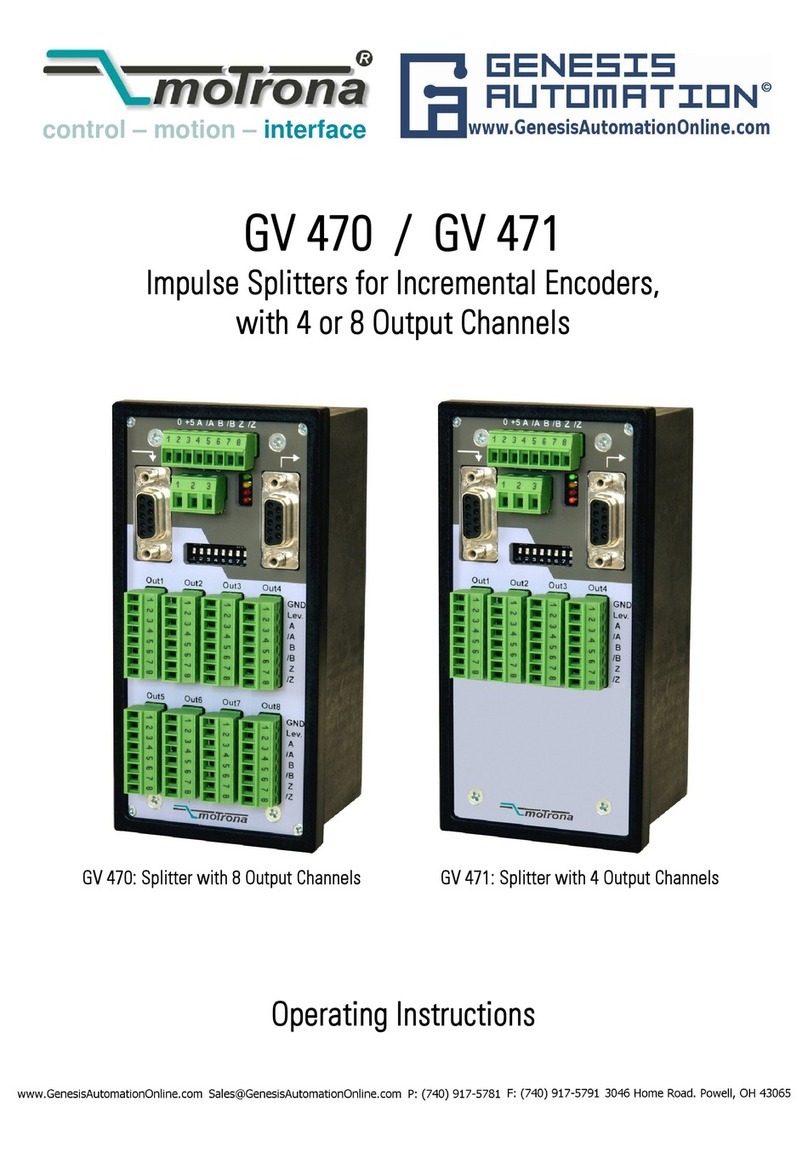
Genesis Automation
Genesis Automation Motrona GV 470 operating instructions
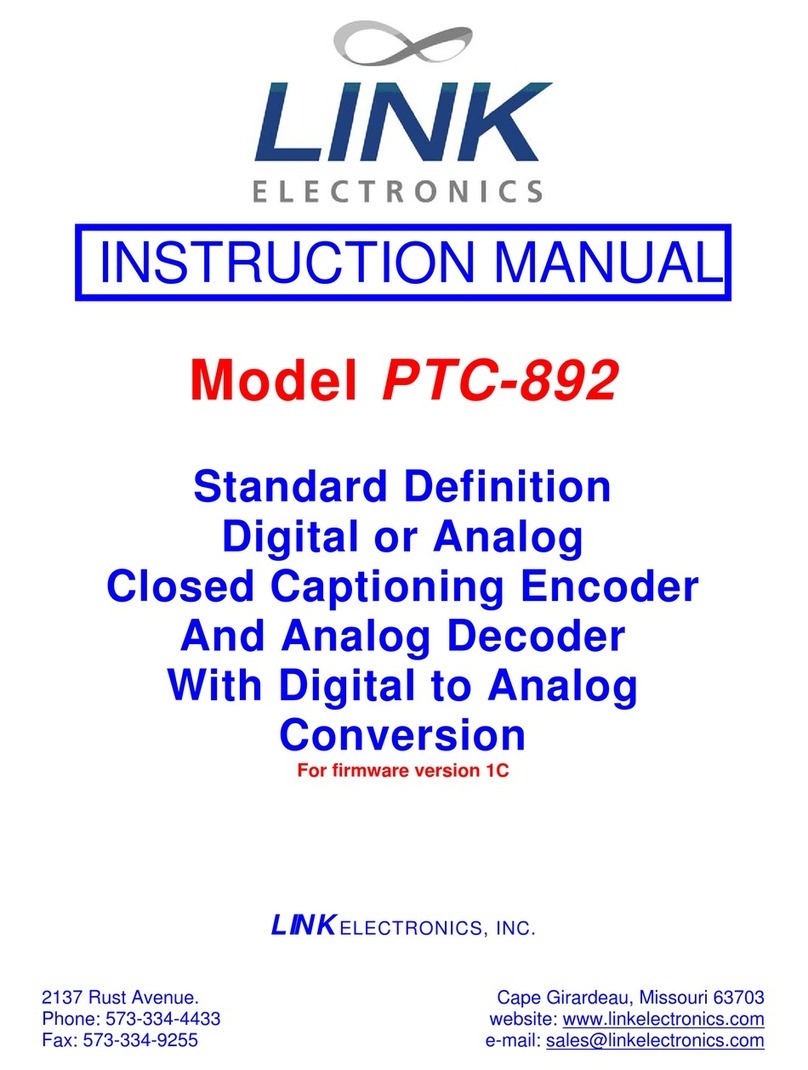
Link electronics
Link electronics Caption Encoder/Decoder SD SDI/Analog... instruction manual

Bueno Electric
Bueno Electric CANFDNET-100T quick start guide

Gomax
Gomax CV-305VS user manual

Dolby Laboratories
Dolby Laboratories DP591 quick start guide
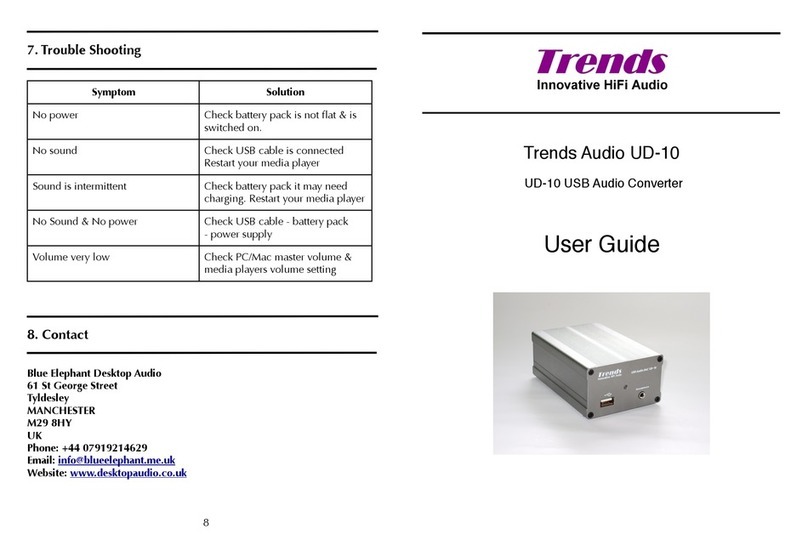
Trends Audio
Trends Audio UD-10 user guide

